Can a Diabetic Eat Chinese Food? Understanding Nutritional Choices
Chinese food can be a delightful culinary experience, but if you are diabetic, you might wonder if it fits into your dietary plan. The good news is that with mindful choices and a little knowledge about nutrition, you can enjoy a variety of Chinese dishes while keeping your blood sugar in check.
When considering Chinese cuisine, the key is to understand which ingredients and cooking methods may impact your blood sugar levels. Let’s explore some critical aspects that can help you make better choices.
Understanding Carb Counts
Many Chinese dishes have ingredients that are high in carbohydrates, such as rice and noodles. These can raise blood sugar levels. It’s essential to understand the carbohydrate content before indulging. Here are some typical dishes with their approximate carb counts:
| Dishes | Carbohydrates (g) |
|---|---|
| Fried Rice (1 cup) | 45g |
| Plain Steamed Rice (1 cup) | 45g |
| Chow Mein (1 cup) | 35g |
| Spring Rolls (1 roll) | 10g |
As you can see, dishes like fried rice and chow mein can be significant sources of carbohydrates, making portion control crucial. Opt for smaller servings or share dishes to manage your intake better.
Choosing Healthier Options
Not all Chinese foods are created equal. If you’re diabetic, consider these healthier options:
- Steamed Dishes: Steamed vegetables or dumplings are lower in calories and tend to have less added sugar.
- Stir-Fries: Choose dishes with plenty of vegetables, lean proteins, and a small amount of sauce.
- Broth-Based Soups: Opt for soups like wonton or hot and sour, which are lower in calories compared to creamy varieties.
- Brown Rice: If you enjoy rice, choose brown rice over white for added fiber.
When placing your order, don’t hesitate to ask for modifications. Many restaurants are accommodating and can lighten dishes on request.
Watch the Sauces
Many sauces used in Chinese cooking can be high in sugar and sodium. Common sauces like sweet and sour sauce, teriyaki, and hoisin sauce can significantly elevate your blood sugar levels. Instead, look for:
- Soy sauce (use low-sodium versions)
- Garlic or ginger sauce
- Chili oil (in moderation)
By making these adjustments, you’ll enrich your meal while avoiding hidden sugars.
Portion Control is Key
Even with healthier choices, portion control remains vital. Eating larger portions can lead to spikes in blood sugar. Here are some tips:
- Use smaller plates or bowls to help control portions naturally.
- Fill half your plate with vegetables, a quarter with protein, and a quarter with carbohydrates.
- Eat slowly to give your body time to process hunger signals.
Plan Ahead
Before dining out, consider checking the restaurant’s menu online. Websites like CalorieLab or NutritionValue.org provide helpful insights into the nutritional content of various dishes. Having a plan can make choosing the right meal much smoother.
Remember, every person with diabetes is unique. It’s essential to monitor your blood sugar levels and see how your body responds to different foods. Always consult with your healthcare provider for personalized advice tailored to your situation.
A diabetic can indeed enjoy Chinese food. By making informed choices, being cautious about portions, and customizing your request based on your dietary needs, you can delight in flavorful dishes without compromising your health.
Enjoy your next meal, and know that with just a bit of knowledge and preparation, you can savor the rich flavors of Chinese cuisine while managing your diabetes responsibly.
Key Ingredients in Chinese Cuisine That May Affect Blood Sugar
When it comes to Chinese cuisine, there are a variety of ingredients that can have an impact on blood sugar levels. If you’re managing diabetes, it’s essential to understand these components. Chinese food is rich in flavors and textures, but some dishes can be higher in carbohydrates or sugars than you might expect. Here are key ingredients in Chinese cuisine that you should be mindful of.
Common Ingredients to Watch
Several staples in Chinese cooking can significantly affect your blood sugar levels. Below are some key ingredients to look out for:
- Rice: White rice is a common side dish but is high in carbohydrates. Opting for brown rice or smaller servings can help.
- Noodles: Chinese noodles, especially those made from wheat, can raise blood sugar levels quickly. Consider alternatives made from whole grains or vegetables.
- Starchy Vegetables: Ingredients such as corn, peas, and potatoes can also add carbohydrates, potentially affecting your glucose levels.
- Sweet Sauces: Sauces like sweet and sour sauce or teriyaki often contain added sugars. Checking labels or asking for dishes without these sauces can be beneficial.
- Fried Foods: Dishes like spring rolls or fried rice can have additional fat and calories, which may lead to increased insulin resistance.
Understanding Glycemic Index
Glycemic index (GI) measures how quickly foods raise blood sugar levels. Here’s a comparison of common Chinese ingredients based on their glycemic index:
| Food Item | Glycemic Index | Type |
|---|---|---|
| White Rice | 73 | High |
| Brown Rice | 55 | Medium |
| Egg Noodles | 49 | Medium |
| Whole Wheat Noodles | 37 | Low |
| Steamed Broccoli | 15 | Low |
Choosing ingredients with a lower glycemic index can help maintain more stable blood sugar levels.
Healthy Alternatives
If you’re looking to enjoy Chinese food while keeping your blood sugar in check, consider the following alternatives:
- Vegetable Stir-Fry: Fresh vegetables with lean protein can be a low-carb option. Use minimal sauce to reduce sugar and sodium intake.
- Sushi Rolls: Opt for rolls made with brown rice and filled with vegetables or fish. Just be cautious with any added sauces.
- Soups: Broth-based soups can be a great choice. Just watch out for noodles or high-sodium options.
- Lean Meats: Dishes with chicken, beef, or tofu prepared without heavy sauces are good for protein intake.
- Salads: A Chinese chicken salad with lean protein and vinaigrette can be a flavorful low-carb meal.
When dining out, communicating your dietary needs to the restaurant is crucial. It’s okay to ask for modifications to make your meal diabetic-friendly.
Being Mindful of Portion Sizes
Portion control plays a significant role in managing diabetes. It’s easy to overeat when enjoying a hearty meal. Keeping a check on portion sizes of carbohydrates can help you maintain balanced blood sugar levels.
Stay informed about what goes into the food you’re consuming. You can also visit resources like the American Diabetes Association for more information on dietary choices, or check out the Nutrition Society for insights on managing your diet effectively.
Enjoying Chinese food is possible even when managing diabetes. By understanding the ingredients and making conscious choices, you can savor the rich flavors of this cuisine without compromising your health.
Healthier Alternatives for Traditional Chinese Dishes
If you’re looking to enjoy Chinese food while maintaining a healthy diet, consider these alternatives to traditional dishes. You don’t have to miss out on the flavors you love; instead, you can choose options that are lighter and more nutritious.
Healthier Alternatives to Fried Dishes
Traditional Chinese cuisine often features fried items that are not ideal for a healthy diet. Swap these for steamed or stir-fried options. Here are some dishes to consider:
- Steamed Dumplings instead of Fried Dumplings – Steamed versions use less oil and still deliver great flavor.
- Stir-Fried Vegetables over Orange Chicken – Choose a mix of colorful veggies tossed in a light sauce.
- Hot and Sour Soup instead of Egg Drop Soup – This soup is typically lower in calories and packed with flavor.
Opting for Whole Grains
White rice and noodles can spike your blood sugar. Consider these healthier grains:
- Brown Rice: Unlike white rice, brown rice retains the bran and germ, giving you more fiber and nutrients.
- Quinoa: This grain is not only gluten-free but also high in protein, making it a lovely alternative.
- Whole Wheat Noodles: A better choice compared to traditional noodles, they offer more fiber to help with digestion.
Lean Proteins Matter
When it comes to the entree, keep an eye on your protein choices. Here’s what to choose:
- Chicken or Tofu: Opt for grilled or stir-fried chicken or tofu for a lean protein source.
- Fish: Dishes made with fish, like steamed fish with ginger, are lighter alternatives that deliver heart-healthy omega-3s.
- Beans: Enjoy dishes that incorporate black beans or other legumes. They’re great for plant-based proteins that are filling yet light.
Reducing Sodium Intake
Chinese food can be high in sodium, which can contribute to high blood pressure. Here are ways to reduce sodium:
- Ask for Less Sauce: Request your dish with light sauce or on the side to control how much you consume.
- Choose Udon or Soy Sauce Alternatives: For flavor, consider using low-sodium versions or vinegar-based sauces.
- Incorporate Herbs and Spices: Enhance flavor without adding salt by using garlic, ginger, or fresh herbs.
Fresh Vegetables are Key
Vegetables play a big role in the balance of your meal. Prioritize these options:
- Stir-Fried Mixed Vegetables: Choose a dish that includes a variety of vegetables to ensure fiber and vitamins.
- Pick Seasonal Greens: Items like bok choy, kale, or snow peas can add nutrients and crunch!
- Salads: Opt for a salad made with fresh greens as a side or starter to pack in fiber before your main dish.
For those with dietary restrictions such as diabetes, consulting with a healthcare provider or dietitian can help tailor your meal choices further. This ensures that you find the right balance between enjoying food and keeping your health in check.
If you want to explore more about healthier eating in Chinese cuisine, websites like Healthline and Eat Right offer valuable insights and tips.
By making these simple swaps and choices, you can continue to enjoy the flavors of Chinese food while promoting better health. Remember that balance is the key, and it’s perfectly fine to indulge occasionally – just know how to make those meals a bit healthier!
The Role of Portion Control in Enjoying Chinese Food
Enjoying Chinese food can be a delightful experience filled with rich flavors and wonderful aromas. However, for those living with diabetes, understanding how to manage portion sizes is essential for maintaining blood sugar levels. With a variety of dishes and ingredients, knowing how to navigate a Chinese restaurant menu while practicing portion control is key.
One of the first steps in portion control is understanding what to order. Many traditional Chinese dishes are often high in carbohydrates, which can cause spikes in blood sugar. Items like fried rice, sweet and sour chicken, and chow mein fall into this category. To better manage your health, consider the following options that are more suited to a diabetic-friendly diet:
- Steamed dishes: Steaming helps retain nutrients and reduces unnecessary fats.
- Stir-fried vegetables: Opt for a variety of colorful vegetables that are low in carbohydrates.
- Lean proteins: Choose chicken, tofu, or fish instead of glazed meats.
- Broth-based soups: Look for dishes like hot and sour soup without added sugars.
Once you have selected your dishes, it’s important to control your portions. Many servings at Chinese restaurants are generous, so consider these strategies:
- Share with Others: Invite friends or family to join you. Sharing plates means you can taste different dishes without overeating.
- Lunch Portions: If available, lunch portions are often smaller and can help you enjoy a meal without compromising your dietary needs.
- Ask for Half Sizes: Don’t hesitate to request a smaller portion when ordering, especially for higher-carb options.
- Take Home Leftovers: Many Chinese meals come in large servings. Split your meal in half, and take the rest home for another meal.
Keeping your blood sugar levels in check is essential for your overall health. It’s also a good idea to keep an eye on added sugars and sodium often found in Chinese sauces. When possible, ask for sauces on the side or opt for lighter sauces, such as garlic or vinegar-based dressings. This offers serious flavor without the added carbs.
Another aspect to consider when enjoying Chinese food is to integrate mindful eating practices. Mindful eating encourages you to slow down and pay attention to the food you are consuming. This can naturally lead to better portion control. Here are some tips to practice mindful eating:
- Eat Slowly: Take your time with each bite. This gives your body a chance to recognize when it’s satisfied.
- Listen to Your Body: Pay attention to your hunger cues. Stop eating when you’re comfortably full, not stuffed.
- Avoid Distractions: Try to focus during your meal to avoid mindless eating, which often leads to oversized portions.
| Dish | Carbohydrate Content (approx.) | Best Portion Size |
|---|---|---|
| Fried Rice | 45g per serving | 1/2 cup |
| Sweet and Sour Chicken | 40g per serving | 3 ounces |
| Stir-Fried Vegetables | 10g per serving | 1 cup |
| Beef and Broccoli | 20g per serving | 3 ounces |
If you are looking for additional resources to guide you, websites like Diabetes.org and EatRight.org offer valuable tips on managing diabetes while enjoying various cuisines, including Chinese food. portion control while eating out can allow you to indulge in your favorite dishes with less stress about blood sugar levels.
You can enjoy Chinese food even with diabetes by practicing portion control. Selecting healthier menu options, paying attention to portion sizes, and embracing mindful eating can make your meals delightful and safe. With proper planning and awareness, you can savor every bite.
Tips for Ordering Chinese Food as a Diabetic
For someone with diabetes, dining out can come with challenges, especially when it comes to enjoying cuisines like Chinese food. Chinese cuisine offers a wide array of flavors and dishes, but many contain ingredients that can spike blood sugar levels. However, with a few mindful choices and strategies, you can enjoy your favorite dishes without impacting your health negatively.
Understanding the types of ingredients commonly used in Chinese food is essential. Here are some tips to help you make informed decisions while ordering:
Choose the Right Dishes
Opt for dishes that are lower in carbohydrates and sugars. Here are some selections that may suit your needs:
- Steamed or boiled dishes: These options usually contain fewer calories and are often lower in sugar. Steamed vegetables, fish, or chicken are often great picks.
- Stir-fried dishes with no added sugar: You can ask for dishes that are stir-fried or sautéed in healthier oils like olive oil or canola oil.
- Broth-based soups: Seek out hot and sour or egg drop soup as alternatives to cream-based varieties, which can be high in carbs.
- Protein-rich meals: Dishes featuring meats, tofu, or seafood offer filling options without excessive sugar and carbs.
Control Portion Sizes
Chinese food is often served in large portions. To avoid overeating, consider these strategies:
- Share your meal: Dining with friends or family? Share entrees to keep portions manageable.
- Ask for a lunch-sized portion: Lunch specials are typically smaller in size but great for controlling intake.
- Box leftovers: Before you start, ask for a to-go box. Depending on your appetite, you can pack part of your meal away for later.
Be Mindful of Sauces and Sides
Sauces can often be a hidden source of sugar, which can affect blood sugar levels. When ordering, consider the following:
- Request sauce on the side: This gives you control over how much you consume.
- Choose lighter sauces: Opt for options like soy sauce or vinegar-based dressings instead of sugar-heavy sauces like sweet and sour.
- Skip fried rice: Fried rice is often high in carbohydrates. Instead, request extra vegetables or a side of steamed rice.
Prioritize Vegetables
Vegetables are a great way to add nutrients to your meal while staying within a healthy carb range. Prioritize ordering:
- Stir-fried veggies: Get your daily intake by including broccoli, bok choy, or snow peas.
- Salads: Try to order salads with sesame dressing for a fresh start to your meal.
Drink Smart
Beverages often contain hidden sugars, especially in restaurants. Here are some suggestions:
- Water: The best choice for hydration without sugar.
- Unsweetened tea: Many Chinese restaurants offer delicious green or oolong teas.
- Avoid sugary drinks: Skip soft drinks and sugary cocktails which can spike blood sugar levels.
Being mindful of your choices when ordering Chinese food can allow you to enjoy the culinary delights without compromising your health as a diabetic. Be proactive in asking questions about ingredients and don’t hesitate to request modifications that cater to your dietary needs.
Remember, sharing these tips with friends and family can also encourage a supportive dining atmosphere. Knowledge is essential in maintaining a balanced diet while still enjoying life’s pleasures, including the flavors of your favorite Chinese dishes.
For further information, you can visit Diabetes.org for dietary guidelines and additional tips about dining out as a diabetic.
Using these strategies, you can enjoy Chinese food while managing your diabetes effectively. Happy dining!
The Impact of Sauces and Seasonings on Blood Sugar Levels
Understanding how different sauces and seasonings affect blood sugar levels is crucial for managing diabetes effectively. Many people with diabetes enjoy a variety of foods, including those that are rich in flavors, like Asian cuisine. It’s important to know that while some sauces can enhance the taste of meals, they may also impact your blood sugar levels significantly.
Types of Sauces Commonly Used in Cuisine
Sauces can be a hidden source of sugars and carbohydrates. Here are some common types of sauces that are often used:
- Soy sauce
- Sweet and sour sauce
- Teriyaki sauce
- Hoisin sauce
- Chili sauce
How Sauces Affect Blood Sugar
Most sauces contain ingredients that can spike blood sugar levels. Here’s a closer look at how some popular sauces impact diabetes management:
| Type of Sauce | Typical Serving Size | Approximate Sugar Content (g) | Impact on Blood Sugar |
|---|---|---|---|
| Soy sauce | 1 tbsp | 1 | Low impact, mainly sodium |
| Sweet and sour sauce | 1 tbsp | 5-8 | High impact, sugar content |
| Teriyaki sauce | 1 tbsp | 4-6 | Moderate impact, sugar included |
| Hoisin sauce | 1 tbsp | 4-7 | Moderate to high impact |
| Chili sauce | 1 tbsp | 2-4 | Low to moderate impact |
As seen in the table, sugar content can vary drastically. Sauces like sweet and sour or hoisin are particularly problematic due to their high sugar content. On the other hand, soy sauce, while high in sodium, typically has minimal sugar but should still be consumed in moderation.
Reading Labels and Making Informed Choices
When selecting sauces, always read the nutritional labels. Look for:
- Low-sugar options
- Natural ingredients
- No added sugars or high fructose corn syrup
Many brands now offer low-sugar or sugar-free versions of popular sauces. These can be great options for flavor without the blood sugar spikes.
Herbs and Natural Seasonings vs. Sauces
While sauces can be challenging for blood sugar control, using herbs and natural seasonings can enhance flavor without the sugar. Consider these alternatives:
- Garlic
- Ginger
- Lemon juice
- Chili flakes
- Fresh herbs like cilantro or basil
These options can provide a flavor-packed ingredient list without compromising your blood sugar levels.
Cooking Methods Matter
How you prepare your food is just as important as the sauces you choose. Opt for cooking techniques that enhance flavor while being accommodating to blood sugar management:
- Grilling
- Stir-frying with minimal oil
- Steaming
- Roasting with herbs
By using these methods along with lower-sugar sauces or no sauces at all, you can enjoy flavorful meals while keeping your blood sugar stable.
Final Tips for Eating Out
When dining at restaurants, it’s beneficial to:
- Ask for sauces on the side
- Request low-sugar options
- Be cautious with portion sizes
- Choose dishes with whole vegetables and lean proteins
By being mindful of what you order and how much you consume, you can still enjoy a rich culinary experience while managing your diabetes.
For additional information on managing diabetes while enjoying flavorful meals, visit the American Diabetes Association or Diabetes.co.uk.
Exploring Low-Carb and Diabetic-Friendly Chinese Dishes
When managing diabetes, food choices become essential for maintaining blood sugar levels. Chinese food, often seen as high in carbohydrates, can still offer delightful options for those watching their diet. Fortunately, there are various low-carb and diabetic-friendly dishes available that can satisfy your cravings. With a bit of knowledge, you can navigate the menu and enjoy a tasty meal without compromising your health.
Understanding the carbohydrate content is crucial when exploring Chinese cuisine. Many traditional dishes may contain hidden sugars or a high amount of rice and noodles, which can spike your blood sugar. However, many restaurants now offer dishes that prioritize lean proteins, fresh vegetables, and lower-carb ingredients. The key is to look for meals that are rich in protein and fiber, as these help stabilize blood sugar levels.
Here are some low-carb options to consider when ordering:
- Steamed Dishes: Steamed dumplings or fish are excellent choices. Steaming retains nutrition while reducing unhealthy fats.
- Stir-Fried Vegetables: Look for dishes that feature colorful stir-fried veggies, such as broccoli, bell peppers, and bok choy. These are low in carbs and high in vitamins.
- Protein-Based Dishes: Options like chicken, beef, or tofu served with vegetables can be satisfying. Just ask for them to be prepared without sugary sauces.
- Hot and Sour Soup: This soup can be a great choice if it’s prepared with tofu and vegetables, though be cautious of the sodium content.
When selecting a Chinese restaurant, it’s advisable to seek out those that highlight fresh ingredients and provide healthy cooking methods. Reading through menu descriptions can equip you with the necessary tools to make better decisions. Many places are now more health-conscious and willing to accommodate dietary restrictions.
Another vital strategy is to communicate your needs when ordering. Let the server know about your dietary restrictions, and they can often help with modifications that better suit your requirements. Simple adjustments, like substituting rice for extra vegetables or requesting sauces on the side, can significantly reduce the overall carbohydrate content of your meal.
In addition, here’s a list of some popular Chinese meals that are typically lower in carbs:
| Dish | Carbohydrate Content (approx.) |
|---|---|
| Kung Pao Chicken (without rice) | 10g |
| Beef with Broccoli | 8g |
| Egg Foo Young | 6g |
| Chinese Chicken Salad | 12g |
As you can see, there are several flavorful options to choose from that won’t derail your dietary goals. Besides watching for carb counts, it’s also beneficial to consider portion sizes. Chinese servings can often be large, so sharing dishes or choosing to take home leftovers can help manage your intake.
For a more specific focus on diabetic-friendly eating within Chinese cuisine, consider visiting resources like The American Diabetes Association or Healthline. These platforms often offer insights and tips for eating out with diabetes.
Indulging in Chinese food while managing diabetes is entirely possible. By opting for low-carb protein-rich dishes filled with vegetables and making mindful choices, you can enjoy a delicious meal without the worry of blood sugar spikes. Just remember to balance your plate and listen to your body’s hunger signals, and you’ll find that enjoying Chinese cuisine can be both satisfying and healthy.
Key Takeaway:
When it comes to enjoying Chinese food as a diabetic, understanding nutritional choices is crucial. The key takeaway is that while it is possible to enjoy Chinese cuisine, it’s essential to be mindful of specific ingredients, portion sizes, and preparation methods that can significantly impact blood sugar levels.
Chinese cuisine often includes key ingredients like rice, noodles, and certain sauces that can contribute to higher carbohydrate intake. For example, fried rice and chow mein can elevate blood sugar levels more than steamed dishes. To better align your meal choices with your health goals, it’s important to learn which traditional ingredients may not be suitable and to consider healthier alternatives. Opting for steamed vegetables or protein-heavy dishes like stir-fried chicken or tofu can greatly improve your options.
Portion control is another vital factor. Chinese food is often served in larger quantities, which can make it easy to consume more than intended. By focusing on smaller portions or sharing dishes, you can help manage your carbohydrate intake while still enjoying a variety of flavors.
When ordering Chinese food, it’s beneficial to be wary of sauces and seasonings. Many popular sauces, such as sweet and sour sauce or teriyaki sauce, are high in sugar and can lead to spikes in blood sugar levels. Instead, ask for sauces to be served on the side, or make requests for lighter seasoning options that are lower in sugar and sodium.
For those on a low-carb or diabetic-friendly diet, it’s worth exploring dishes and ingredients that naturally fit these dietary needs. For instance, choosing items that are primarily vegetable-based or opting for dishes centered around proteins can lead to a satisfying and healthful meal.
While a diabetic can enjoy Chinese food, it’s essential to choose wisely. By understanding the impact of traditional ingredients, exercising portion control, and selecting healthier alternatives, you can savor the flavors of Chinese cuisine without compromising your health. With mindful ordering and awareness of what constitutes a balanced meal, indulging in Chinese dishes while managing diabetes becomes an achievable goal.
Conclusion
Navigating Chinese food as a diabetic is certainly possible with careful planning and mindful choices. By understanding the nutritional landscape of this cuisine, you can make informed decisions about what to eat. Key ingredients—like rice, noodles, and certain sauces—can affect your blood sugar levels, but knowing how to swap them for healthier alternatives is essential. Opting for steamed, stir-fried, or grilled options and asking for brown rice or extra vegetables can significantly enhance your meals’ healthiness.
Portion control plays a vital role in enjoying Chinese food. By adhering to appropriate serving sizes, you can indulge without derailing your dietary goals. When ordering, it’s helpful to communicate your needs, requesting less sugar in sauces or choosing simpler preparations that keep your health in focus.
Be mindful of how sauces and seasonings can impact your glucose levels; many traditional dishes come laden with sugars and sodium. However, there are plenty of low-carb and diabetic-friendly options to explore that still offer the vibrant flavors of Chinese cuisine. Dishes featuring tofu, lean meats, and plenty of vegetables can be both satisfying and diabetes-friendly.
Ultimately, you don’t have to forsake the joy of savoring Chinese food. With awareness and smart choices, you can enjoy your favorite dishes while keeping your blood sugar in check. Embrace the variety that this cuisine offers, and take the time to find meals that work for your unique health journey.
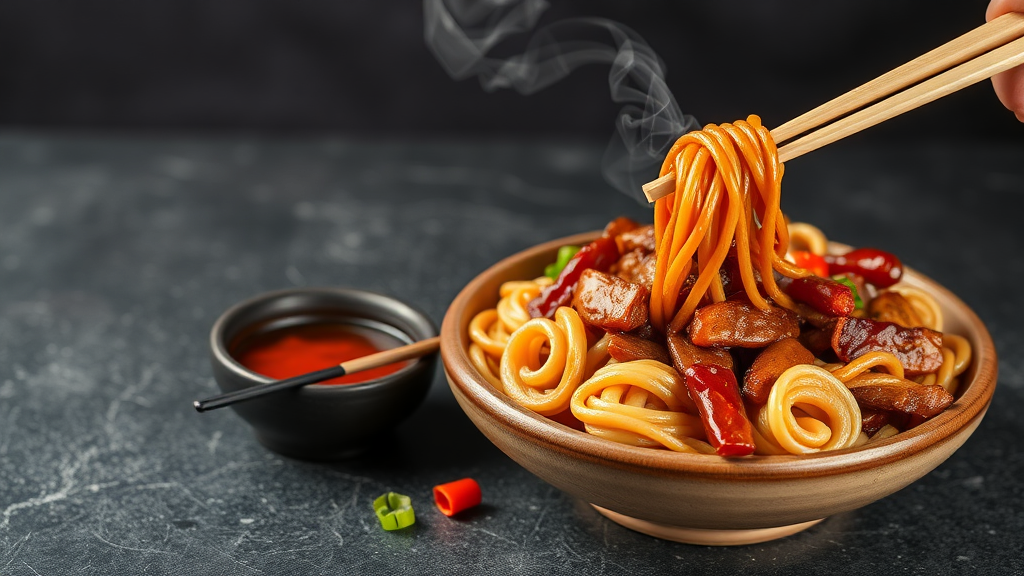


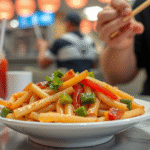
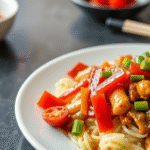
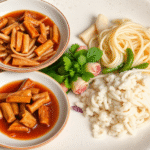
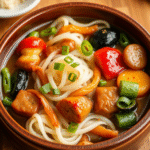
Leave a Reply